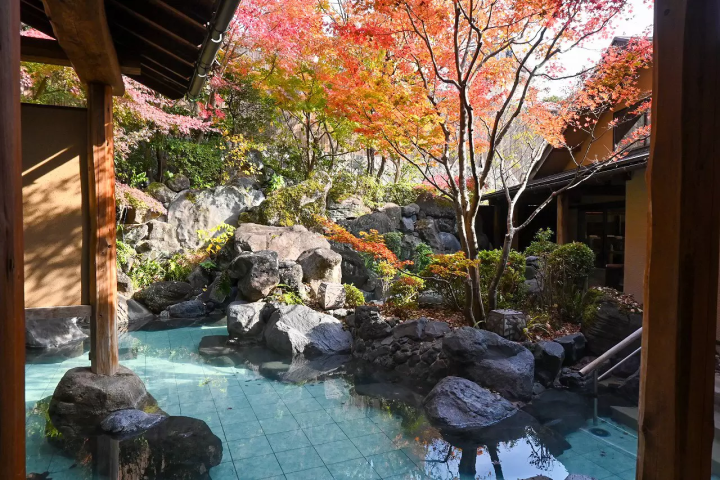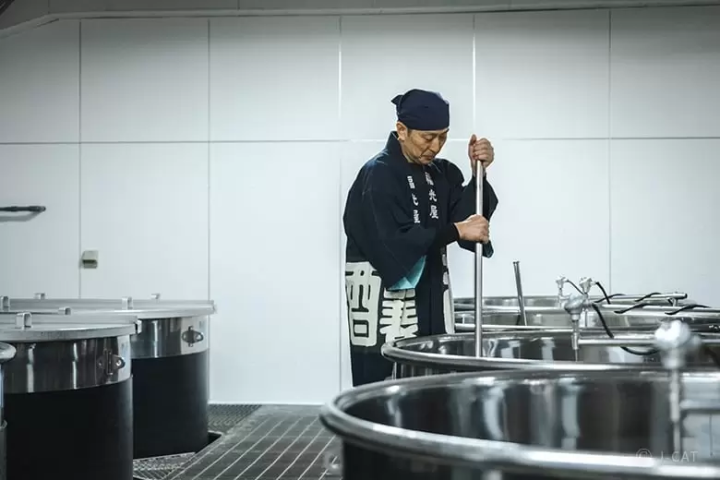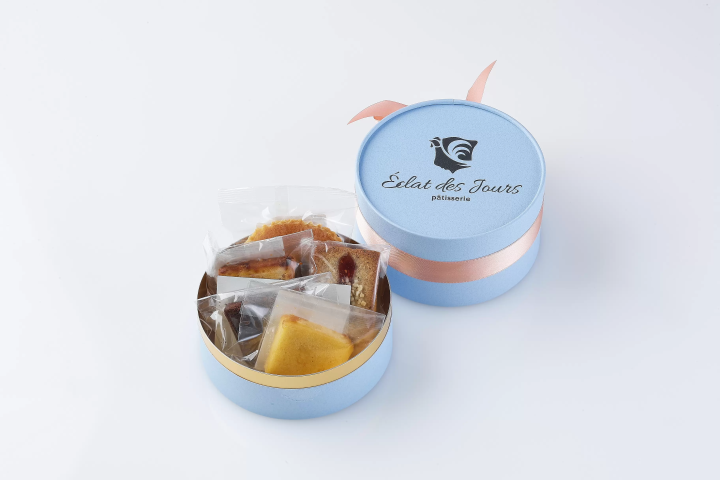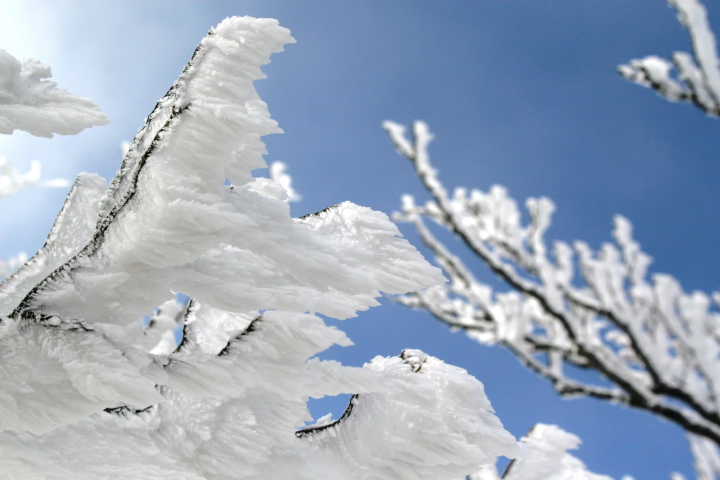Cycling In Toyama - Bayside And Rural Sightseeing Spots

Toyama is famous for its natural settings and cultural assets. This article introduces two cycling courses which allow the participants to enjoy making sushi or visiting a unique temple.
In Toyama Prefecture, visitors can enjoy both the great view of Toyama Bay and the idyllic view of the mountains and the rural areas. To fully enjoy its appeals, cycling is the recommended way to move around in Toyama.
In this article, we will introduce the various sightseeing spots along the Toyama Bay Cycling Course and Den-en Cycling Course.
Toyama Bay Cycling Course - Feel the Breeze and Enjoy the View

Photograph provided by Toyama Prefecture
Toyama Bay, along with Mont-Saint-Michel Bay in France and Ha Long Bay in Vietnam, is a member of the World's Most Beautiful Bays Club.
On a clear day, the Tateyama mountain range can be seen across the bay. The sight of the 3000-meter class mountains beyond the bay is very picturesque, creating a wonderful cycling course.
It might be fun to visit at the time of Toyama Bay Cycling, an annual event with more than a thousand participants.
The event will be held on April 29th, 2018, and the registration starts on January 14th. For details, please check their official site (Japanese).
Rental Bicycles

Photograph provided by Toyama Prefecture
This cycling course runs through the bayside cities of Himi, Takaoka and Imizu.
There are various rental cycle stores around the prefecture, and the average fee is about 500 yen per day. At Himi City Fishing Culture Center, where the course starts, visitors can rent a bicycle for 500 yen per day. The business hours are from 9:00 to 16:00.
Visitors can choose from three types of bikes: cross, mountain and road. The cross bike is recommended for beginners.
An ID card will be required to rent a bicycle, and there will be no rental service during harsh weather and winter periods. For further information, please ask the staff at the reception.
The bayside course is well-maintained, so you won't be needing a full cycling gear. Some easy-to-wear clothing will do, although a windbreaker may be a good idea, as the wind will be chilly in autumn.
The blue lines painted on the road mark the cycling course.
Recommended Spot No.1: Kaiwomaru Park
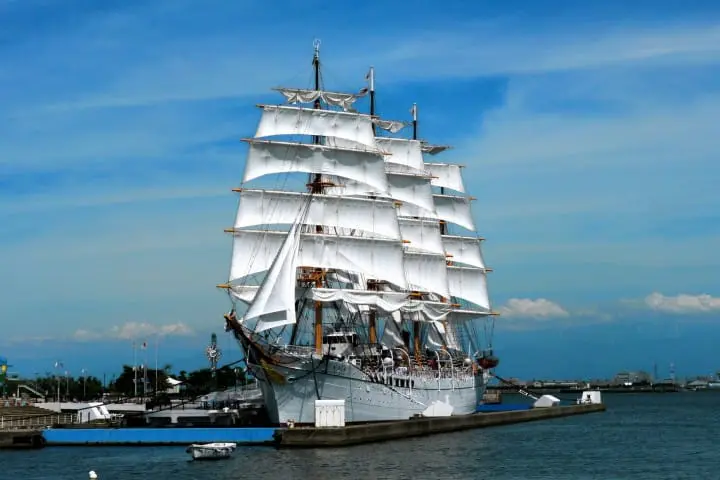
After cycling for about 45 minutes from the Fishing Culture Center, a large ship will come into view. This is the Kaiwomaru, a former training ship built for a mercantile marine school. It has traveled 1.06 million nautical miles in sixty years, which approximates to circling the earth fifty times.
Kaiwomaru has been decommissioned and is currently used as an exhibit at the port, so it might be fun to make a visit.
This spot is known as Kaiwomaru Park. There is also an event space designed like a seashell and a plaza as well. It is a perfect place to take a break from cycling.
Recommended Spot No.2: Shinminato Bridge

Shinminato Bridge stretches for 3.6 kilometers. The upper level of the bridge is for cars, and the lower level is for pedestrians.
The pedestrian level called Ai no Kaze Promenade can be reached by elevator, and stretches for 480 meters. Visitors can enjoy the entire view of Kaiwomaru Park from here, while enjoying the feeling of walking over the bay.
Please note that the bicycles must be wheeled in the promenade. It is open from 6:00 to 21:00 in May to October, and 6:00 to 20:00 in November to April.
Recommended Spot No.3: Sazan

Sazan is a cafe restaurant located at Shinminato Marina. Various yachts and boats can be viewed from the interior, where the design is based on tones of blue.
At the terrace seats, visitors can enjoy the breeze while sipping on some delicious coffee. The restaurant is open from 9:00 to 22:00 (last call at 21:00), and closed on Tuesdays.
Recommended Spot No.4: Sushi Academy Shinminato

For lunch, let's go to Sushi Academy Shinminato, and enjoy the sushi chef experience.
Participants can try their hands at sushi making, under the guidance of the taisho (master chef), using seasonal fish from Toyama Bay. Although the lecture is done in Japanese, the participants can watch and imitate the process.
Don the happi (*1) and cap, get inside the counter, and you will feel like a sushi chef.
*1 Happi: A traditional piece of clothing that's mainly worn at festivals. It is a waist length coat, and worn like a Japanese kimono.

The taisho will guide you through the details, such as the amount of rice, and when to add wasabi. Compared to Tokyo, sushi in this area is made with a little more rice.
The details of sushi making differs according to the area, and the participants will be able to learn the local way.

The sushi made with your own hands is something special. There will be eight ingredients per person, and the price is 2800 yen, without tax. (Other courses are also available.) This menu also includes kabusu jiru, a local cuisine.
Kabusu is a local fishermen's dialect, meaning a share of the fish catch. Kabusu jiru is a variation of miso soup, cooked on the fishing boat by the fishermen, throwing the fresh, chopped catch into a large pot.
The deep fish dashi is what makes kabusu jiru so good. It is a great seafood dish.
A certificate will be handed out to all the participants at the Shinminato Sushi Academy, making them (sort of) an expert. For reservations, which should be made at least seven days before the visit, take a look at the official site of the Academy.
Den-en Cycling Course: Enjoy the Idyllic Scenery

From Dentetsu-Toyama Station, take the Toyama Chihou Railway bound for Unazuki Onsen. After a 25 minute ride, you will arrive at Kamiichi Station, in the middle of natural settings. The following is the details of Den-en (rural) Cycling Course in Kamiichi City.
Visitors can enjoy various outdoor activities at Kamiichi such as trekking, onsen (hot springs) and forest therapy, not to mention cycling. The area has also inspired some of the settings in the Japanese movie "Wolf Children".

The course runs through the rural areas to Oiwasan Nissekiji, a temple of the Shingon Sect.
If you see the local residents during the ride, say konnichiwa (hello) to them. Some may even cheer you on.
Oiwasan Nissekiji: A Buddhist Image Carved into the Rock

Oiwasan Nissekiji has many appeals such as the three-storied pagoda and the temple gate built in the Edo Period. It should take about an hour to tour the grounds.
The huge Fudo Myoo carved into the rock wall and placed in the main temple, is a monument you just have to see with your own eyes. The impressive statue is truly breathtaking.
Photographs are not allowed inside the main temple, so take home the image in your memory.

Roppon-daki (The Six Small Waterfalls) is another spot you should visit. It is said that the falls were made to cleanse the body and mind before visiting the Fudo Myoo statue.
Every year on January 20th, when the coldest period of winter ("daikan" in Japanese) sets in, kanshugyo (takigyo) is held at this spot. Takigyo is one of the Buddhist ritual training methods where the participant stands under a waterfall to become one with nature and to clear his mind in the process.
Reservations can be made for the takigyo, so it might be fun to try it.

The tree near the main temple is megusuri-no-ki (Nikko maple), which is said to improve eye illnesses. Visitors can taste the tea made from megusurinoki leaves, stored in the large pot by the chozuya.
The tea has a simple taste and is free. Be sure to wash the cup afterward, and leave it facing down.

The restaurants near Oiwa Nissekiji is known for its delicious somen noodle dishes. If you have the chance to visit in summer, give it a try.
Joyama Springwater

On the way to Oiwa Nissekiji from Kamiichi Station, there is a signboard marking the place of the Joyama springwater.
The spring water comes from a cave located about thirty meters above the well. It is a soft water type that is easy to drink.
The local residents love it, and come with large tanks and plastic bottles to draw water. The nearby cafe uses the springwater to make their tasty hot drinks, so this is a perfect place to take a break.
Kamiichi Tourist Information

Visitors can rent bicycles at the Kamiichi Tourist Information center, located inside Kamiichi Station and open from 9:00 to 17:00. The initial fee is 1000 yen. If you return the bicycle the same day within the business hours, the rental fee will be reduced to 500 yen.

The route to Nissekiji is an uphill road, so it might be better to rent a mountain bike, to cope with the climb.
Although it may feel hot during the climb, visitors should wear something that can be adjusted, as it will be much cooler on the downhill road. On a clear day, you might also need sunglasses.
Enjoy the Toyama Breeze
Cycling is the best way to experience the natural settings of Toyama. Visitors will be able to take in the whole atmosphere, something that might be missed on a car or a train.
Sponsored by Toyama Prefectural Government/ Tourism, Transportation & Regional Promotion Bureau/ Tourism Promotion Office
MATCHA's promotional account for corporate and local government advertising. We aim to provide useful information to our readers in an enjoyable manner.

































![[For beginners and debutants] Special feature on recommended ski resorts and ski tours!](https://resources.matcha-jp.com/resize/720x2000/2025/12/26-254120.webp)
